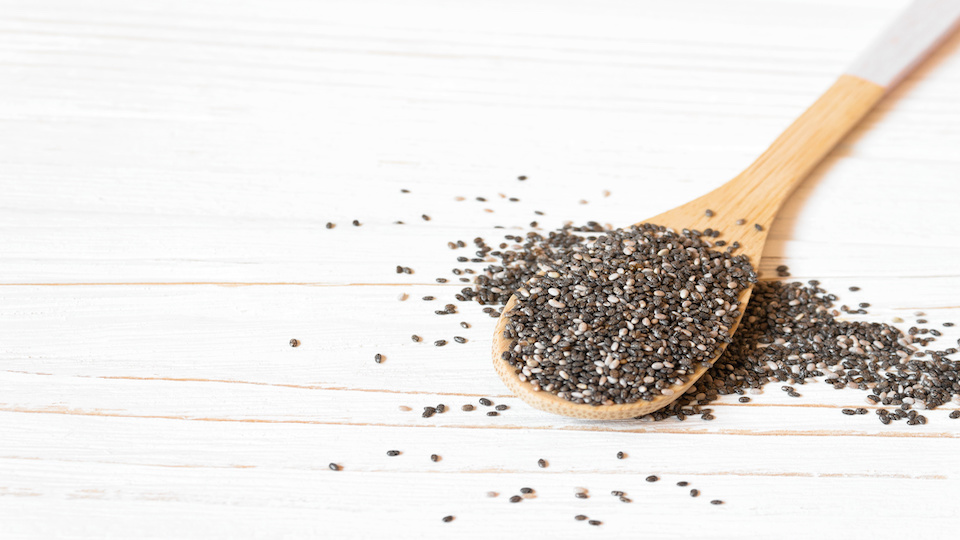Health enthusiasts revere the little chia seed as a nutrient-packed superfood. This tiny seed has been cultivated since ancient times in the Americas. Native to South and Central America, legend has it that Aztec warriors prized chia seeds for energy and strength. To enjoy the benefits of chia seeds you don’t have to look far—they’re in nearly every grocery store and available online. But, if you may want to grow your own, here’s what you need to know.
What Are Chia Seeds?
Chia seeds come from the plant Salvia hispanica, which is related to mint. It has been cultivated in Central and South America, as well as Mexico, for a thousand years or more. The seeds are small but nutritious and can be used in a variety of ways. Chia seeds are rich in:
- Omega-3 fatty acids.
- Antioxidants.
- Fiber.
- Protein.
- Minerals, including magnesium, phosphorous, copper, and selenium.
The seeds can be used in all kinds of recipes, including bread and baked desserts, salads, drinks, jams, pudding, oatmeal, salad dressings, and more. The high fiber content of chia seeds gives them a unique property. When soaked in water they create a gel-like material. This makes chia a useful thickener and can be used in place of gelatin for vegans.
Why Grow Your Own Chia?
So if you can get chia seeds in most supermarkets, why grow your own? If you live in a warmer climate, specifically USDA zones 8 through 11, growing chia outside is pretty easy and a great plant for beginner gardeners. Add a little diversity to a vegetable garden and know where your food is coming from and that it’s organic. The leaves are edible too, and when dried they make a nice tea.
Chia is also a pretty plant that looks great in a flower bed. To get the seeds you have to let the delicate purple flowers develop. You’ll enjoy the foliage and blooms while you wait for the right time to harvest and use the seeds.
Growing Chia – Soil, Sun, and Warmth
To grow chia outdoors, you need to be in zones 8 through 11, which cover much of the southeastern states and Texas, Arizona, California and the Pacific Northwest, and tropical areas. If you’re in one of these areas, you can grow chia.
In addition to climate, it’s important to consider soil. Chia plants will tolerate a range of soil types but prefer light, even sandy soils. The one thing this plant must have is good drainage. Any standing water or excessive moisture in the soil will cause problems. Chia grows best in full sun.
Planting and Watering Chia
Once you have a good spot set aside to grow chia plants, get the soil ready. Turn and loosen the soil and amend it to be lighter if necessary, by adding sand or peat moss. Mix in some compost for nutrients, which will help your plants thrive. As long as there is compost in the soil, fertilizer shouldn’t be necessary.
If you can’t find transplants for growing chia, use seeds. They can be started outdoors after any danger of frost has passed in the spring. Sowing chia seeds doesn’t have to be done with great care; just scatter them and pat lightly into the soil. If you have issues with birds eating seeds, start them indoors and transplant seedlings when they get to be about three inches tall.
Water your chia bed regularly until the plants are well established. As the seedlings sprout, thin them out so they have enough space to grow and mature. As a bonus, you can eat the sprouts. Just toss them in salads. Once you have larger plants, water only when rainfall is scarce.
Harvesting Chia Seeds
Chia plants grow about three feet tall and produce pretty blooms in the summer. As soon as most of the petals have dropped, pick the spike of flowers and let it dry flat indoors. Don’t hang them to dry, or the seeds will fall to the ground. To get the seeds out just crush up the flowers and let the seeds drop into a bowl or other container.
Don’t expect to get a lot of chia seeds from one plant, but if you grow a few you’ll get a decent harvest for your own personal use. These plants are easy for any novice gardener, and even if you never collect the seeds, enjoy the pretty plants and summer flowers.
-Mary Ellen Ellis



